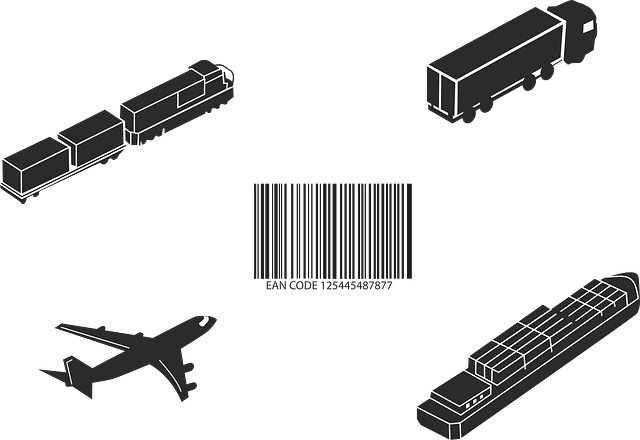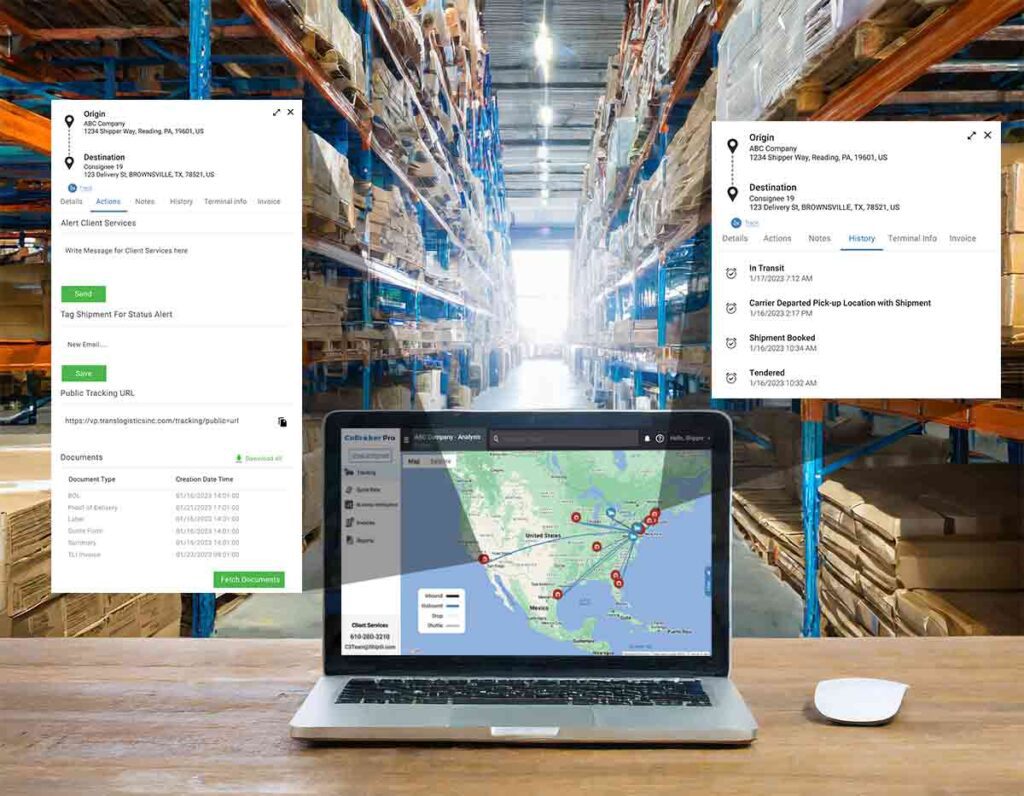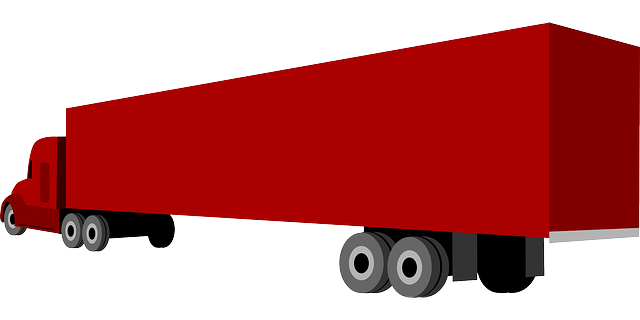Ensuring compliance with shipping regulations is essential for keeping your logistics operations smooth, safe, and penalty-free. From proper BOL documentation to pallet labeling standards, following the right steps helps protect your business and avoid costly mistakes.

Identify Common Regulatory Pitfalls
Understanding the most common regulatory pitfalls is the first step toward compliance. Here are a few areas that frequently cause issues:
- Documentation Errors: Missing or incorrect documentation, such as Bills of Lading (BOL) and Proof of Delivery (POD), can lead to fines and delays.
- Improper Labeling: Labels that don’t meet legal standards or lack necessary details (like hazardous material labels) can cause compliance violations.
- Unlicensed Carriers: Using carriers without proper operating authority, licensing or insurance exposes you to legal risk and non-compliance with FMCSA standards.
Awareness of these common pitfalls can prevent unnecessary costs and protect your business’s reputation.
Stay Up-to-Date with Regulatory Changes
By keeping up with these resources, you can adapt quickly and avoid compliance risks.
Shipping regulations change frequently, so staying informed is crucial. You can monitor updates from key resources like:
- Federal Motor Carrier Safety Administration (FMCSA) and the Department of Transportation (DOT) websites.
- Industry Publications like AP News, Inbound Logistics, Transport Topics, and Freight Waves offer timely regulatory updates.
- TLI’s Transportation Blog also provides valuable insights on compliance trends and news to keep your business on track.

Use Accurate Documentation for Every Shipment
Proper documentation is one of the best defenses against regulatory issues. Accurate paperwork is critical, especially for international or hazardous shipments. Make sure your team handles:
- Bills of Lading (BOL) and Proof of Delivery (POD) with accuracy, including details on freight content, weight, and handling instructions.
- Customs Documents if shipping internationally, as errors here can lead to costly delays at the border.
Shipping internationally introduces complex requirements, and we’ve seen some unusual setups with shippers trying to manage them alone. For example, before working with us, some shippers mistakenly used two different Incoterms on a single shipment, creating confusion over responsibilities and liability. We’ve also seen companies dedicating entire rooms to the manual task of stapling PODs to BOLs—an inefficient process that our TMS automates completely, making document retrieval instantaneous. Instead of getting buried in time-consuming tasks, setting up a scalable, tech-driven process will save time and ensure accuracy. And if you’re uncertain about the best approach, a consultant can help you create an efficient, compliant solution.
Training your team on correct document handling saves time, reduces errors, and ensures compliance with shipping regulations.
Check Labeling Requirements Carefully
Labels are key to compliance, especially if you handle hazardous materials. Be sure to:
- Follow Labeling Standards: Check that all packages display the correct information, including content description, weight, and any applicable hazard labels.
- Use TMS Automation for Accuracy: Leveraging a Transportation Management System (TMS) can streamline labeling processes, ensuring that each shipment includes all required information automatically.
Here’s a quick story about the importance of accurate labeling: A shipper once routed a pallet using UPS Freight (before it became TForce Freight) and was outraged when the shipment went missing. After extensive tracking efforts, it turned out the wrong pallet label had been used. The shipment ended up at a vendor’s location—because they had reused packaging with an old label still attached. Recycling packaging is a great practice, but without updating the labels, it can lead to costly mix-ups and OS&D (Over, Short, and Damaged) issues. Double-checking labels ensures your freight reaches the intended destination without unnecessary detours.
A compliant labeling process prevents delays and minimizes the risk of non-compliance penalties.

Leverage TMS Technology for Compliance Automation
A TMS offers valuable tools for ensuring compliance with shipping regulations by automating essential checks and processes:
- Automated Documentation: A TMS can generate accurate Bills of Lading and Proof of Delivery for every shipment.
- Regulatory Checklists: TMS systems offer automated compliance process checklists to make sure that every shipment follows the latest regulations.
- Automating Load Tendering: At the time of BOL creation ViewPoint TMS can autotender the shipment to the motor carrier for pickup.
- Integrated Labeling: With automated label generation, a TMS helps avoid human error and ensures every shipment meets legal standards.
By automating compliance, a Transportation Management System takes the pressure off your team and reduces the chance of mistakes.

Prioritize Carrier and Vendor Compliance
Working with compliant carriers and vendors strengthens your shipping processes. TLI ensures that all carriers we partner with hold the necessary licenses and insurance required by FMCSA and DOT. It’s equally essential to:
- Verify Vendor Credentials: Check that every carrier meets legal standards for licensing, insurance, and safety ratings.
- Regularly Review Contracts: Audit carrier contracts to verify that compliance requirements, including licenses and certifications, are always met.
With a compliance-driven approach to partnerships, you protect your business and keep your shipments secure.
Using Highway and TIA Watchdogs for Real-Time Carrier Monitoring
CoBrokerPro uses specialized tools like Highway and TIA Watchdogs to keep a close eye on carrier compliance. These tools provide real-time updates on carrier status, including their operating authority, insurance validity, and FMCSA records. Here’s how each tool contributes:
- Highway: This tool allows us to monitor and verify that carriers meet essential compliance requirements. Highway alerts us to any changes in a carrier’s status, so we know if a carrier’s authority lapses or if there are new compliance concerns.
- TIA Watchdogs: The Transportation Intermediaries Association (TIA) Watchdogs tool helps us track potential issues across the industry. By using it, we stay aware of red flags that may arise, such as safety violations or fraud reports tied to specific carriers.
Both of these tools make sure that CoBroker Pro partners only with qualified motor carriers, giving shippers confidence that their loads are handled by carriers meeting high standards.
Regularly Audit Your Compliance Processes
Maintaining compliance isn’t a one-time task. Regular audits of your shipping processes allow you to:
- Spot and Correct Issues: Identify areas for improvement, especially in documentation and labeling.
- Adjust to New Regulations: Use audits as an opportunity to update procedures when regulations change.
Implementing routine audits ensures that your processes stay in line with shipping regulations, protecting your business and helping you operate smoothly.
